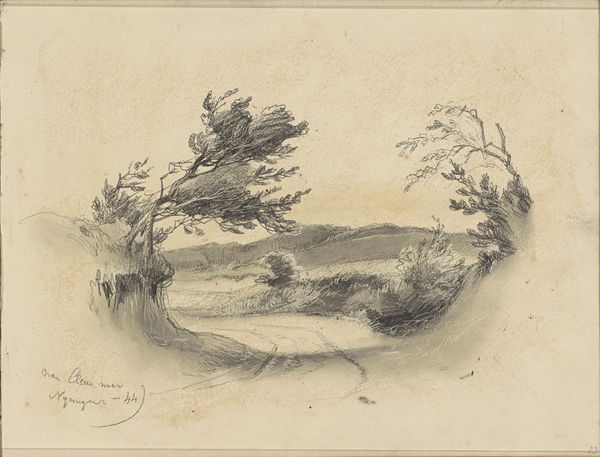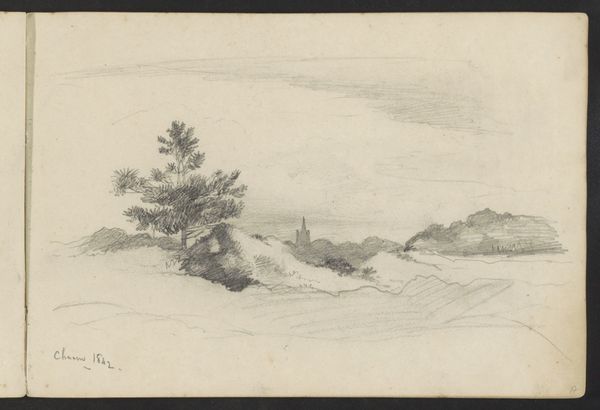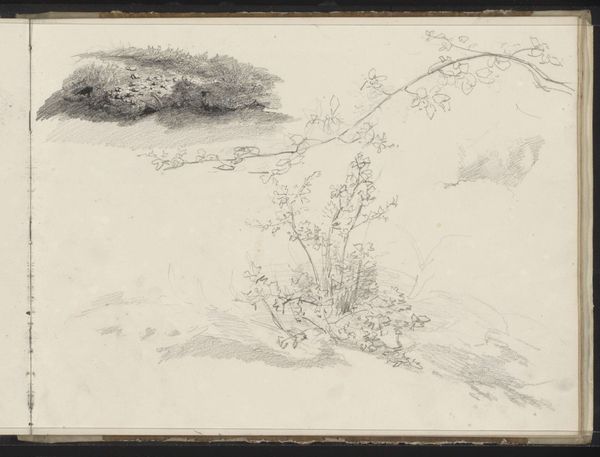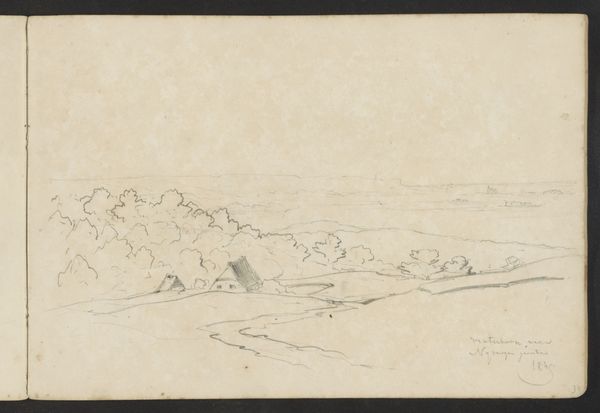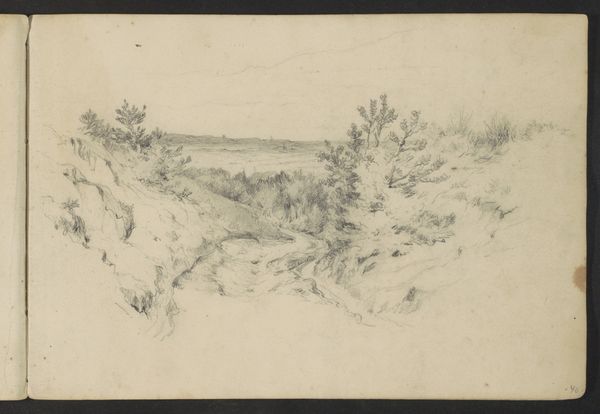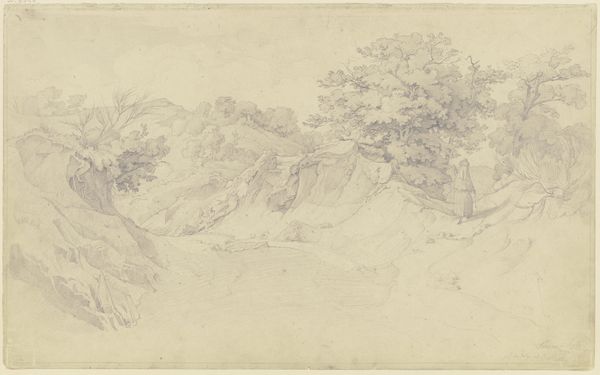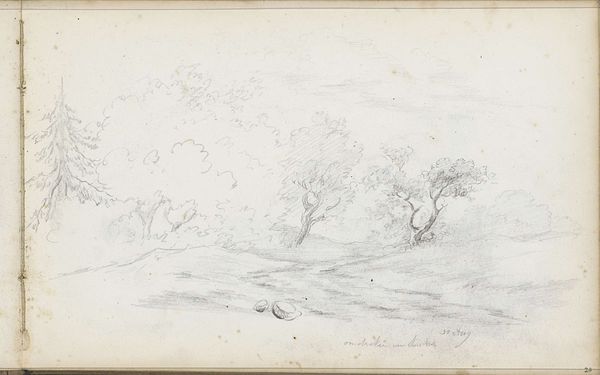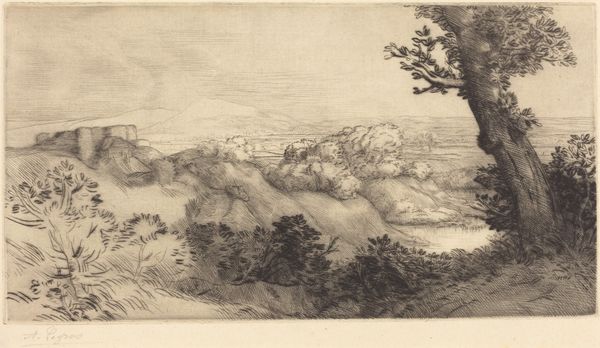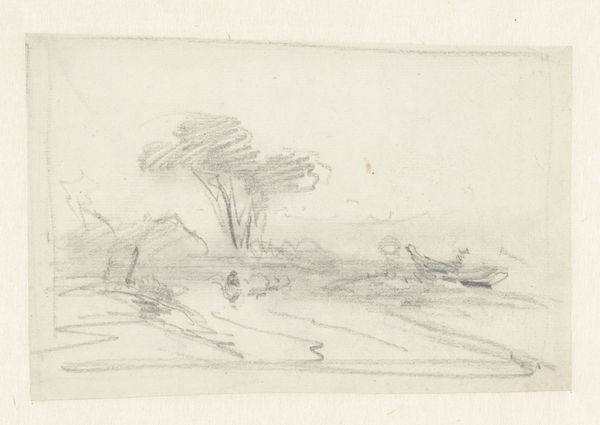
Copyright: Rijks Museum: Open Domain
Editor: So, this is Johannes Tavenraat’s pencil drawing, “Dal in een heuvellandschap met bomen,” or "Dale in a Hilly Landscape with Trees," dating somewhere between 1842 and 1868. The hazy, almost dreamlike quality of the landscape makes me wonder, what do you see when you look at this piece? Curator: I see a fascinating encapsulation of the Romantic era’s engagement with nature. Think about the socio-political context. This piece emerges during a time of growing industrialization and urbanization. How might the public, or the artist himself, have viewed this scene as a counterpoint to those rapid changes? Editor: I hadn’t considered it that way. I was so focused on the style, how loose and unfinished it looks. Curator: Exactly! And that looseness speaks volumes. It resists the kind of precise, almost scientific landscape renderings popular in earlier periods. Instead, Tavenraat is capturing a mood, an atmosphere. What is the effect of that central tree being so prominent and solitary? Editor: I guess it emphasizes the solitude and maybe even vulnerability, compared to the vastness of the landscape. A symbol of the individual in nature? Curator: Precisely. Consider also how the Rijksmuseum itself—a national institution—historicizes and frames this piece today. What does it mean to preserve and display an image that romanticizes the land? Is it about national identity, a shared cultural heritage? Editor: It’s almost like this drawing becomes a historical artifact itself, showing us how people *wanted* to see the landscape, as much as what it actually was. I’ve definitely got a new perspective now. Thanks! Curator: And I am reminded how artworks gain meaning as socio-cultural values evolve. A fruitful discussion!
Comments
No comments
Be the first to comment and join the conversation on the ultimate creative platform.
